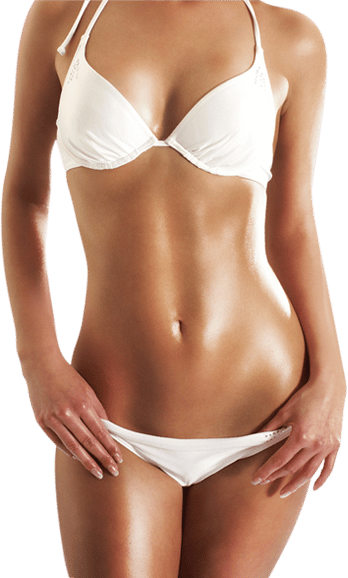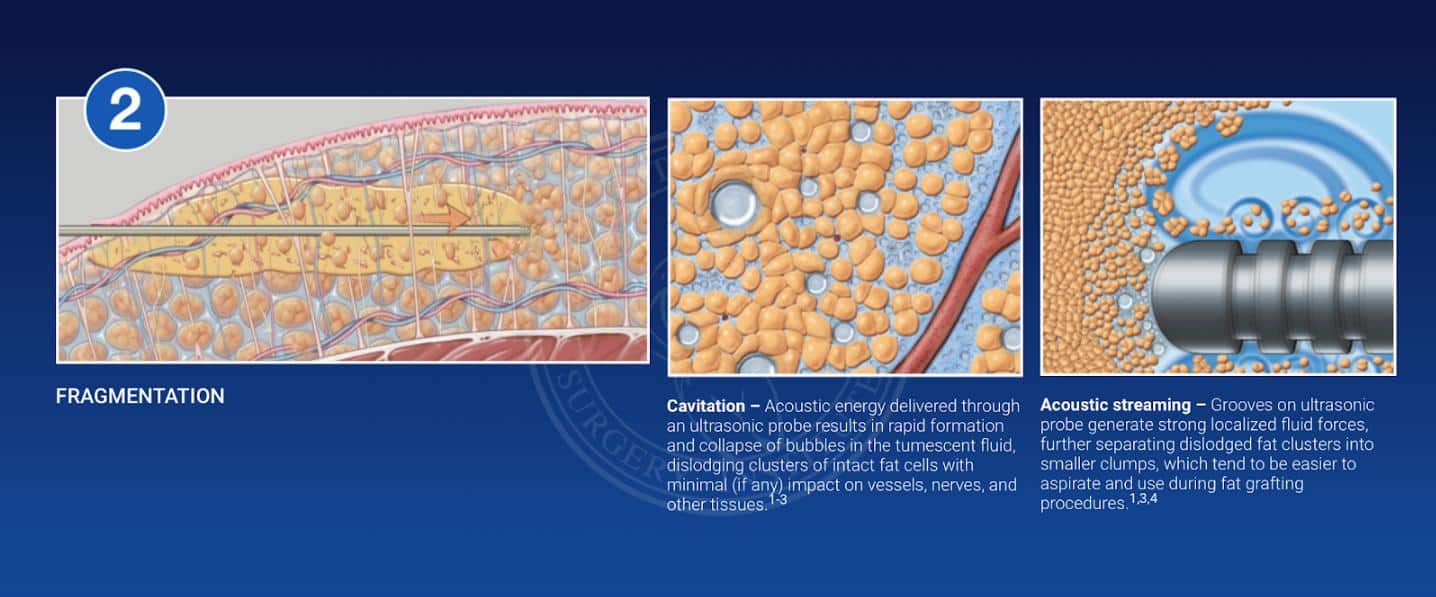VASER stands for Vibration Amplification of Sound Energy at Resonance. It utilizes specialized ultrasound technology in order to break down fat cells by sending out ultrasonic frequency waves. VASER liposuction is a medical procedure, which is used to modify the contours and silhouette of the body by removing persistent fat deposits. Once the fat cells have been broken down, a cosmetic surgeon is able to remove excess fat with suction from a cannula.
Through VASER’s ultrasound technology, an increased amount of benefits can be achieved compared to traditional liposuction.

Like with any liposuction procedure, VASER liposuction is ideal for patients whose goal is body contouring and sculpting rather than a weight loss procedure. VASER liposuction is performed best on patients with durable skin tone and who are in good health. This procedure is suitable for those who would like to lose a few inches around their thighs, hips or waist or add some definition without weight loss.

VASER liposuction is typically carried out under general anaesthetic. Smaller areas can be done under local anaesthetic as well. Initially, tumescent solution is injected into the area being treated. This is followed by utilizing VASER ultrasonic probes, which are inserted into the fatty tissue to gently break the fat cells down. The vibration gently loosens the fat cells and ultimately emulsifies the tumescent fluid that has been injected into the area. Once the emulsification is complete, a small cannula is used to suction the liquid and fat cells.
Follow-up care will also require post-liposuction massage within at least the first 2 weeks.
One of the major and unique benefits of VASER liposuction is that it fragments fat through sound waves before it is removed. This causes less damage to the surrounding tissue, and increases the accuracy of the procedure which provides smoother results. VASER also requires a smaller incision than traditional liposuction. All this together is used in an ideal candidate to perform what is known as HiDef Liposuction, allowing us to not only remove excess fat but to sculpt an athletic body shape and accentuate muscular anatomy.

VASER liposuction is precise ultrasound-assisted technology combining mechanical and acoustic fragmentation/emulsification of fat designed to maximize procedure speed and efficiency while minimizing trauma to surrounding tissue
Sound Surgical Technologies, LLC in 2002, introduced VASER ultrasonic liposuction. This FDA technology uses sound waves to gently loosen fat and pave the way towards liposuction and smooth contouring of the body.
A cosmetic surgeon uses VASER ultrasonic probes, inserted into the fatty tissue to gently break the fat cells down. The vibration gently disengages and loosens the fat cells and ultimately emulsifies the tumescent fluid that has been infused into the body area. Once the emulsification is in process, a small cannula is used to remove the liquid and the fat cells
Tumescent Infusion: Tumescent fluid containing small gas bubbles 5 to 10 microns in size is infused throughout targeted fat tissue. Tight junctions between cells within blood vessel walls and connective tissues prevent gas bubbles from interspersing among and affecting these tissues.

Cavitation: Acoustic energy delivered through an ultrasonic probe results in rapid formation and collapse of bubbles in the tumescent fluid, dislodging clusters of intact fat cells with minimal (if any) impact on vessels, nerves and other tissues.
Acoustic Streaming: Grooves on an ultrasonic probe generate strong localized fluid forces, further separating dislodged fat clusters into smaller clumps, which tend to be easier to aspirate and use during fat grafting procedures.

Fat Removal: A small diameter cannula designed to minimize trauma to vessels, nerves, and fibrous tissue matrix is inserted to gently suction out the mixed fat cell and tumescent fluid emulsion

Tissue Remodelling: Adipose tissue removal during liposuction creates a space for retraction to occur. Post-procedure skin retraction is maximized when the superficial fatty layer is “thinned” with minimal trauma to tissues and the elastic subcutaneous connective tissue matrix is preserved. This allows the skin to naturally retract and re-drape to the underlying frame during the healing process.
